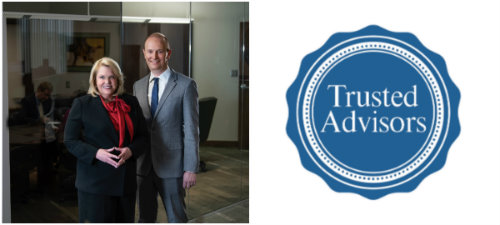
It can be hard to let go. Whether it’s your own business, or you’ve been entrusted with leading a business, you invest so much to ensure its success. When it’s time to move on, you want to not only make sure the impact of all your hard work carries on, but also that the transition is as seamless as possible.
At First Bank, succession planning is one of our areas of expertise. With four generations of single-family ownership, we uniquely understand the importance of a smooth transition. We’ve recently rolled out our own leadership transition. Last year, we announced Chief Executive Officer (CEO) Tim Lathe would step down. In May of 2019, Shelley Seifert, President, FB Corporation, took the helm as CEO.
We leaned on our 100-plus years of experience to help ensure this transition in our leadership was a success. Below are four key considerations to help businesses ensure a seamless transition.
1. TRANSPARENCY
Leadership must demonstrate there is an openness to communicate with employees. A transition brings with it a lot of questions and employees need to be given the opportunity to understand what changes they can expect. In order to make its transition as transparent as possible, First Bank conducted a series of town halls with Seifert and Lathe in which they met with employees to address their concerns. First Bank made a point to outline the strategic positions of both the outgoing and incoming CEO, and explain any changes employees can expect. Having an open, honest dialogue with employees helped them feel better prepared.
2. CHEMISTRY
A strong partnership between the new and outgoing leader is critical to an effective transition. The relationship between the two sets the foundation for new management. The incoming leader must be prepared to take control of the company and understand the corporate culture. The outgoing leader is best equipped to provide this support as well as gain organizational buy in for his or her successor. The absence of a symbiotic relationship between leaders can create fear of change. Prior to the announcement of the CEO transition, First Bank had experienced a period of change, rolling out a renewed strategic plan in 2014, which was again refreshed in 2017. It was important to demonstrate to employees that the company would remain stable under new leadership. The positive relationship between the current CEO and his successor instilled that confidence across the organization. Although there won’t always be a well-established relationship between the incoming and outgoing CEO like in First Bank’s case, the outgoing CEO must be invested in the transition and support the candidate throughout the process.
3. OPPORTUNITY
With change also comes opportunity. A leadership transition offers the chance to address issues within the organization that may have been overlooked. It’s also another way to make employees feel part of the transition. First Bank leveraged change communication to solicit feedback from their employees on ways to improve. The town halls were conducted in a roundtable format to create an open setting and encourage employees to participate. First Bank executives asked how management can address their concerns. Following these meetings, the First Bank management team compiled a list of issues and assigned them out to responsible internal parties. In the coming weeks, these groups will present their plans and employees will receive timely follow up communications on progress. First Bank executed two key components to feedback–creating an open environment and demonstrating a commitment to action. If employees feel intimidated, they’re less likely to come forward. In addition, if they doubt management’s ability to act, they lack incentive to participate. In First Bank’s case, management designed an open forum and developed a set of action items to hold themselves accountable.
4. SOLIDARITY
A transition presents the perfect opportunity for an incoming leader to establish their own management style. It’s equally important for a new leader to establish that identity while ensuring they are not detracting from what the company has worked to establish. A smooth transition requires solidarity in staying true to the company’s vision.
For First Bank’s transition, Seifert and Lathe shared the same commitment to First Bank’s employees and clients. For both, the plan for First Bank’s continued growth lies in adhering to becoming THE bank for family-owned and privately-held businesses.
Whether incoming leadership is in complete lockstep with outgoing leadership or not, businesses should consider implementing changes in gradual shifts. What’s going to change is equally as important as what remains the same.
For advice on business transition strategies, contact Charles Claver, Wealth Management Advisor and Infinex Representative, at First Bank Wealth Management by calling (310) 887-0100 or via email at [email protected].
Wealth Management products and services are provided through First Bank, and its affiliates and subsidiaries. Investment and insurance products are offered through INFINEX INVESTMENTS, INC., Member FINRA/
SIPC. First Bank Wealth Management is a trade name of First Bank. Infinex and First Bank are not affiliated. Infinex does insurance business in California as Infinex Insurance Agency, CA Agency License #0H30186.
Products and investment advisory services made available through Infinex are not insured by the FDIC or any other agency of the United States and are not deposits or obligations of nor guaranteed or insured by any bank or bank affiliate. These products are subject to investment risk, including the possible loss of value. Infinex does not offer legal or tax advice. Consult your legal and/or tax advisor for more details.
